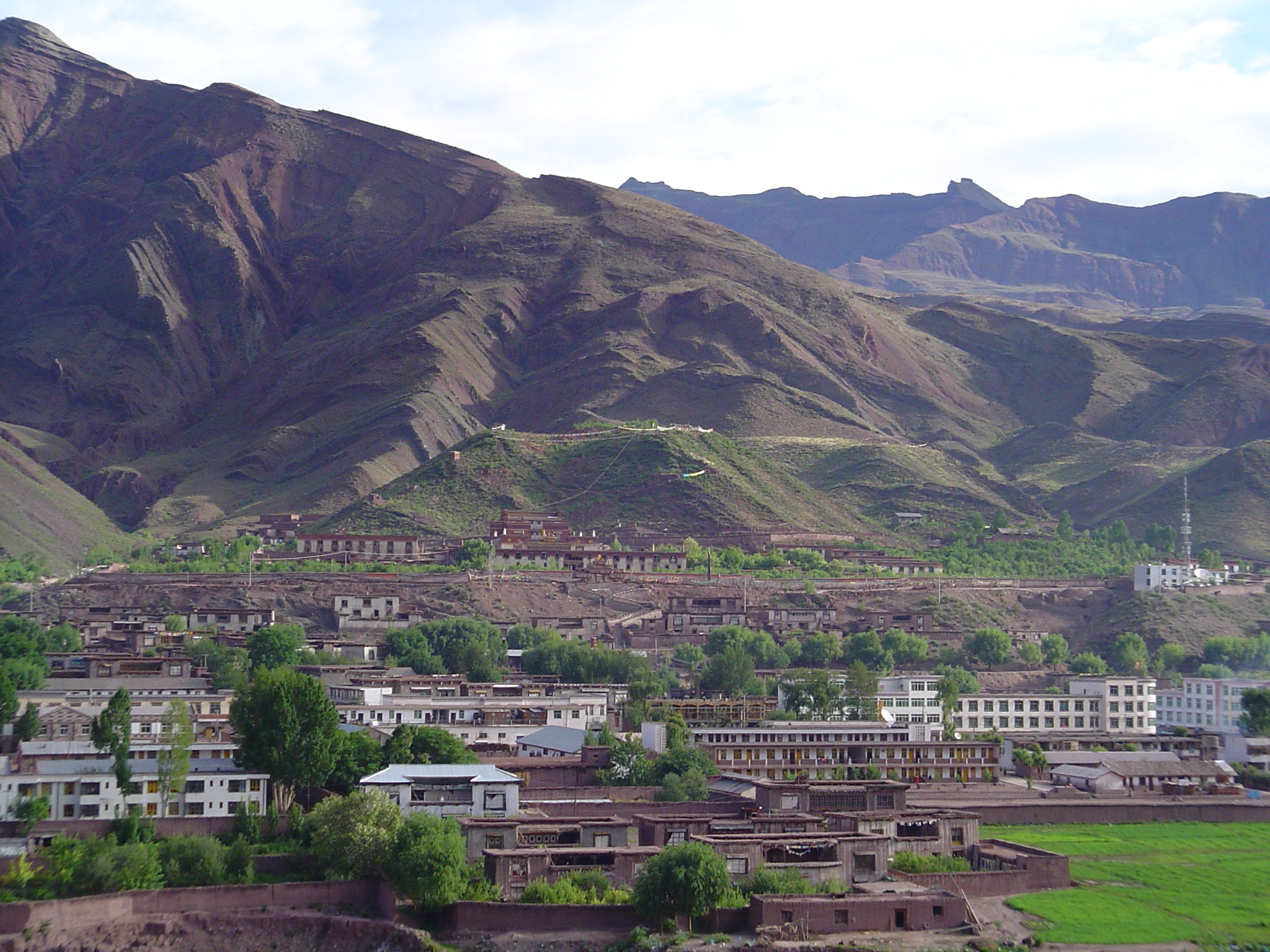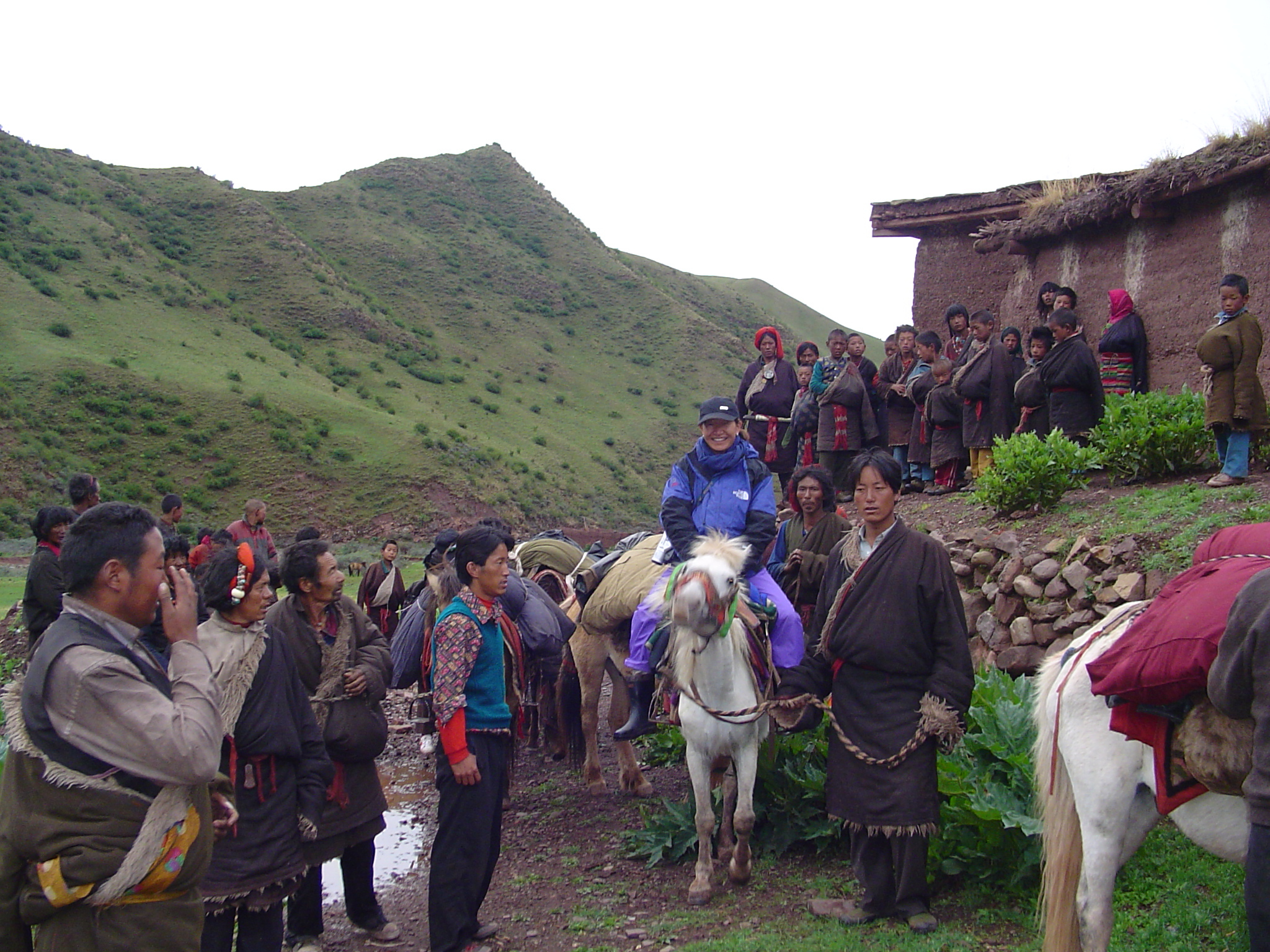The Tibetan cultural area covers more than 10 million square kilometres, is bordered by the Himalayas to the south, the Karakoram Mountains to the west, the Kunlun Mountains to the north and several high snow mountain ranges to the east.
The Dagyab region lies on the eastern border of the Tibet Autonomous Region about 60 km from the third largest city of Chamdo and almost 1000 km from the capital Lhasa on the upper reaches of the Mekong River. It is about half the size of Hesse. The landscape there is beguilingly beautiful: fertile river oases with fortified village-like farming settlements, striking, deep red, barren rocky landscapes with perpendicular geological layers and wide, green high pastures alternate.
The approximately 50,000 inhabitants live mainly from agriculture or nomadic farming. Beyond the two main settlements of Yendum and Jamdün, the horse is still an indispensable means of travel in this region, whose plains and valleys lie at altitudes between 3100 and 4200 metres.
The Minyak region in northwest Sichuan is part of the so-called Kandze Autonomous County and is close to the famous holy mountain Minya Konka (7556 m). This part of the ancient Tibetan province of Kham is fertile and dotted with traditional Tibetan villages with massive stone houses.
Loden Sherab Dagyab Rinpoche, the former head of Dagyab, was born in Minyak in 1940. He taught as a Tibetologist at the University of Bonn for over 30 years and is now retired. He lives with his family in Berlin and is, among other things, the spiritual director of the cultural and educational institute Tibethaus Deutschland in Frankfurt. See also: www.dagyab-rinpoche.com
Dagyab Rinpoche has been able to travel back to Dagyab several times since 1984. Although his compatriots had rebuilt some of the monasteries with great effort, it was obvious that the medical and educational care of the population was inadequate and also that the knowledge of traditional handicrafts was in danger of being completely forgotten.
Therefore, in 1993, some committed friends and colleagues of Dagyab Rinpoche, who had heard about the situation in Dagyab, decided to found an association with the aim of helping the people in his homeland to develop.
From the beginning, the association's work has been directed towards four goals: Raising the level of education - Improving medical care - Cultivating and preserving Tibet's unique culture - Promoting the education and living conditions of the nuns.
OVERVIEW OF THE PROJECTS IN TIBET
From 1994 to 2015, the Dagyab Association has been able to implement a lot of well-functioning projects in Dagyab and Minyak with the help of many private donations, funds from BMZ, Nepalhilfe, Aachen and the Trace Foundation, among others. Here is a brief overview of the schools, health station, art institutes and houses for the nuns, and much more:
- A traditional Tibetan medical institute in Jamdün, Bugön district, where 56 TTM male and female doctors have been trained,
- two boarding primary schools in the remote nomadic areas of Sershongthang and Tsarasumdo,
- two handicraft schools in Yendum, Magön district (where over 100 thangka painters have been trained so far) and Jamdün, Bugön district,
- a meeting hall for nuns in Dölma Ritrö, Magön district,
- three residential houses for studying nuns in Jamdün, Bugön district,
- 12 new semi-detached houses at Dölma Ritrö Nuns' Hermitage and Peljor Ritrö Nuns' Hermitage,
- two health posts at Sershongthang School, one health post at Jorkhe Ritrö, Bugön District,
- one health post at Yendum, Magön district,
- a large study and disputation hall in Dölma Ritrö, Magön district,
- a health station in Dölma Ritrö, Magön district, a health station in Ewam Ritrö, Magön district,
- and a health station in the Minyak region.




